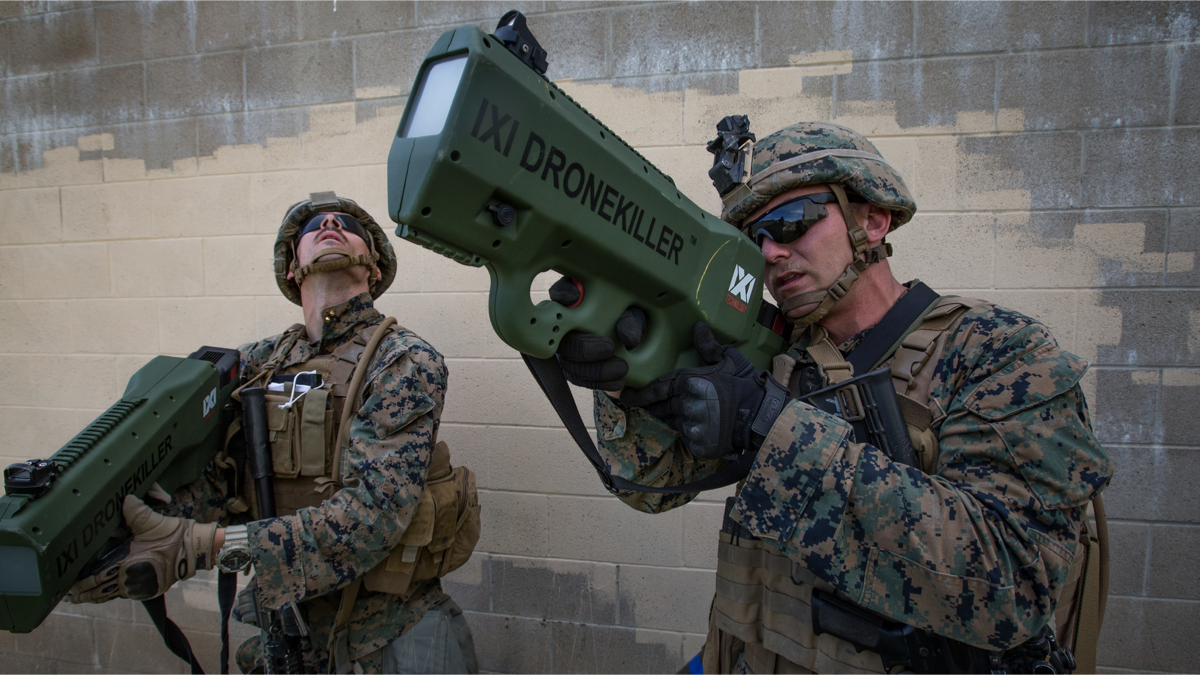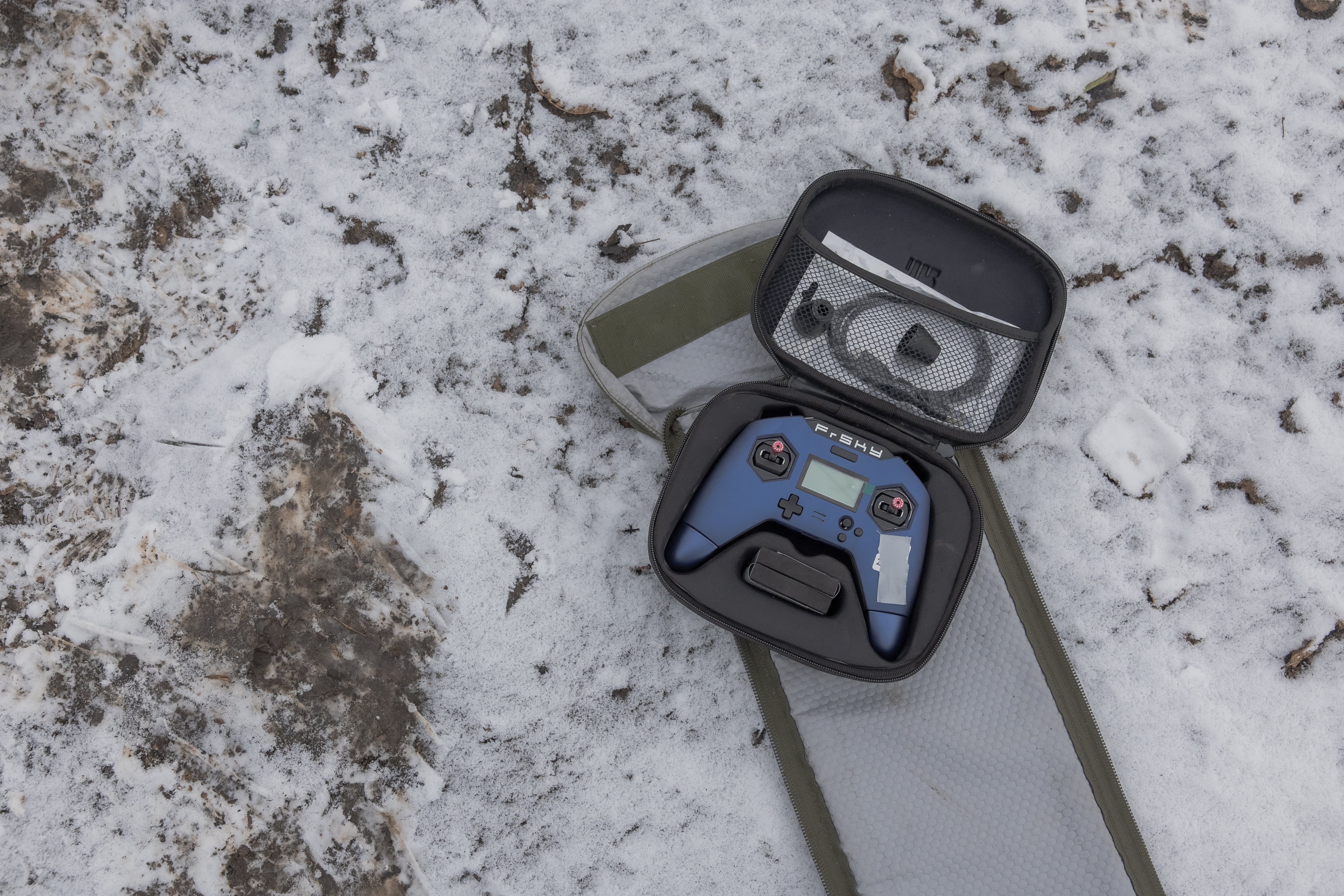Marine Corps AV-8B Harrier pilots want to rehearse. Like professional athletes who use visualization techniques and technology to game plan, the Marines are looking to leverage mobile devices to rehearse sorties before stepping into their Harriers. In this case, the mobile devices are not tablets or phones. Instead, they are full cockpit simulators capable of deploying aboard an L-class ship or to a forward-operating location.
These Deployable Mission Rehearsal Trainers, or DMRTs, are currently in development by Naval Air Systems Command's Naval Aviation Training Systems Program Office and LSI, Inc., a Jacksonville, Florida-based training and simulation company. An $8.4 million procurement contract signed last August calls for the design and construction of eight DMRTs expected to be ready for delivery/training by the third quarter of fiscal 2018.
Visualization and rehearsal have long been part of military operations, from basic war-gaming to full-scale simulation exercises. But outside the military, rapid advances in technology and psychology have been integrated more quickly into professional fields, including sports. The NFL and its teams now provide players and coaches with electronic playbooks; position-specific game film; radio frequency identification-enabled, player-specific position, speed and distance data; and other information via mobile devices whether a team is at home or away.
Compare that to tactical aviation, which relies increasingly on simulation for training purposes but is more limited in scope for mission planning in the field. That contrast was illustrated for Anthony Singleton, integrated program team leader for Marine Corps Aviation Training Systems (PMA-205), upon hearing of a shipboard squadron ready-room where a makeshift AV-8B cockpit, with its controls, buttons and knobs drawn on whiteboards surrounding a "pilot" chair, was in use.
"There was a question asked of us … are we doing anything to help make that [situation] better?" asked Singleton. PMA-205 had already begun research into transportable simulation devices in 2013 in response to a Marine Corps request which bubbled its way up from the Harrier community.
"There was a recognized need to progress in the training and readiness events that could be conducted while deployed," Singleton said. "Eventually that made its way up to Headquarters Marine Corps Aviation."
After market research, PMA-205 determined that the other services did not have a device that could meet the Harrier community's needs.
Simulation training across the services
The Navy employs a combination of high-fidelity tactical operational flight trainers and low-fidelity tactics, techniques and procedure devices, some connected across its Naval Continuous Training Environment network at the air wing level. But it does not have a deployable medium-fidelity device like a DMRT. Naval Air Forces Command was previously not aware of DMRT development. The Air Force has various Weapons System Trainers that are used across Air Combat Command. They range in fidelity from full-motion simulators at a limited number of training facilities to simple cockpit mock-ups, which might be found within squadron workspaces.
"As you might imagine, the 'deployability' of Weapons System Trainers varies," ACC spokesman Maj. Andrew Schrag acknowledged. The more basic simulators are not "as high quality as a fully immersive simulation system, but they suffice for some aspects of aircrew mission rehearsal." Given that Marine Harrier squadrons may soon share deck space aboard a landing helicopter dock with F-35B squadrons, the question arises of whether the Corps' newest fighter can leverage its own transportable simulator. According to Lockheed Martin spokesman Nate Simmons, the F-35 program has its own mission rehearsal simulators.
"Our F-35 Deployable Mission Rehearsal Trainer is a secure facility that features two cockpits with a shipping container-sized footprint," Simmons said. "Powered by the same software that's on the aircraft, the simulator replicates all sensors and aircraft features for an accurate mission rehearsal experience at a fraction of the cost of live training."
Simmons said that the Joint Strike Fighter Program currently has two DMRTs at Edwards Air Force Base, California, supporting pilot training/currency requirements for developmental and operational testing. However the F-35 DMRT's shipping container-sized footprint is larger than Marine Aviation's expressed requirement, and the existence of just two F-35 DMRTs suggests they will largely stay where they are rather than deploy.
The Marines' DMRT genesis
Without existing alternatives, PMA-205 embarked on its own DMRT development, distilling its specifics from the requirement issued by the weapons branch of Headquarters Marine Corps Aviation Section. The final requirement and request for proposals was issued in 2015. LSI, which won the contract, has an established track record building full-scale maintenance trainers with exact replica cockpits for aircraft including the CH-47 Chinook, UH-60 Black Hawk and AH-64 Apache. The company provides additional simulation devices, training aids and documentation, and aircrew training for Defense Department and foreign military clients. A clue as to what the DMRT may look like is available to observers who've seen LSI simulator prototypes at the annual I/ITSEC Orlando trade show for the last two years.
"You can literally reconfigure [the simulator] to different types of aircraft or helicopters, whatever the requirements are," said LSI's director of marketing, Brett Ulander.
LSI was scheduled to submit its DMRT configuration for preliminary design review in March. While it may not include all the physical aspects of an AV-8B cockpit, Singleton said it will be "complete with touch-screen panels to simulate the switchology — the buttons and displays — in the [Harrier] cockpit."
"Our requirement is for a mobile device that has the capability for Harrier pilots to conduct initial and refresher decision-making training for radar operation, hands-on throttle and stick, heads-up display, multi-function displays, and others," he said. "It will also allow them to conduct land- or ship-based takeoff, taxi and landing procedures."
The DMRT is also supposed to go on the road. NAVAIR envisions a package sized no greater than 6 feet long by 6 feet wide by 6 feet high. The DMRT package will likely consist of several boxes that can be picked up by two Marines and carried aboard an L-class ship. The requirement calls for a system that can be set up or torn down in two hours. Singleton said that the Marines will decide how to transport the DMRTs, but the basic size implies that they could easily be flown on/off ship or to a forward operating base.
Despite its size, NAVAIR says the Harrier DMRT will have a significant level of fidelity and the flexibility to expand beyond its initial requirements.
The DMRT is to use realistic flight models and the latest graphics for visual database options. It will be capable of uploading specific sortie data from existing databases including classified data. Such capability could make it a highly useful rehearsal tool potentially bolstered by connectivity.
At present, the simulator is expected to have the capability to pair with another DMRT located in the same space. A hardwire connection between the two would facilitate leader/wingman flight profiles, offering further fidelity and the opportunity for crew coordination. The F-35 DMRT has device-to-device connectivity as well.
Like the Navy Continuous Training Environment, the Marines' Aviation Distributed Virtual Training Environment is a networked system.
"The idea right now is that these devices will not connect to ADVTE," Singleton said. "However, in the future, if the Marine Corps desires that, we could certainly revise the system to connect to the ADVTE."
LSI's Ulander adds that capitalizing on the DMRT's connectivity potential is relatively straightforward up to and including the possibility of using real-time database information from unmanned aerial systems or other assets. Combining secure connectivity and the possibility of integrating a portable DMRT into future live virtual constructive training platforms would make it, or similar devices, difficult for TACAIR users to ignore.
When queried about the possibility, Naval Air Forces Command spokeswoman Cmdr. Jeanette Groeneveld said, "There is no reason why DMRT could not be integrated into NCTE and future LVC capabilities, but the requirement would need to be defined and resourced through the budget."
With the preliminary design review yet to be concluded, NAVAIR's Singleton confirms that PMA-205 has not thus far discussed the DMRT concept with anyone aside from its Marine Corps customer. But the office is open to doing so.
"If other services were to come across this and want to utilize what we've done, we'd certainly share information with them," he said.
The DMRT critical design review will take place this summer, and by fall its details should be locked down. The current deployment plan is to deliver the simulators to Marine Aviation Training System Sites at selected AV-8B air stations/wings in late 2018. MATSS will be the DMRT "owner" and issue the devices to deploying Harrier squadrons in line with operational needs.
According to LSI's marketing director, a DMRT like the one his company is designing for NAVAIR comes with a relatively low cost compared to full Level D simulators typically in use at regional facilities. Cost will naturally be a primary factor in the adoption of DMRTs beyond the current project, but their initial and potential utility may prove even more influential.
"In my opinion the main advantage of the DMRT is the ability, in a shipboard environment, to rehearse missions in a somewhat realistic virtual environment before you have to get in the aircraft and fly it," Singleton said. "I think that's beneficial especially for some of the younger pilots who, in these days of readiness challenges, may not have gotten as many sets and reps in the airplane as they would want or need. This simulator allows them to increase the number of sets and reps prior to going into actual combat."








